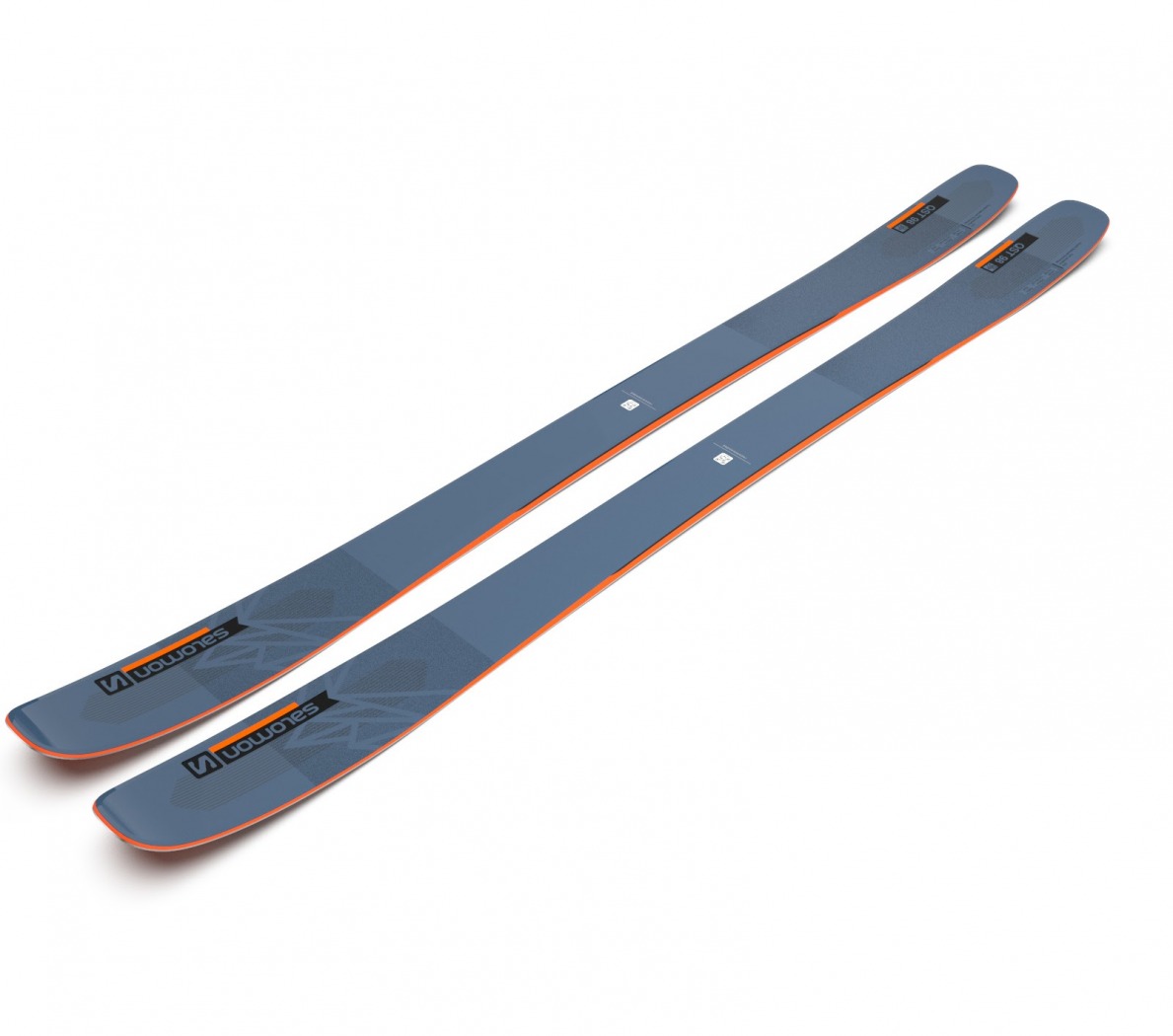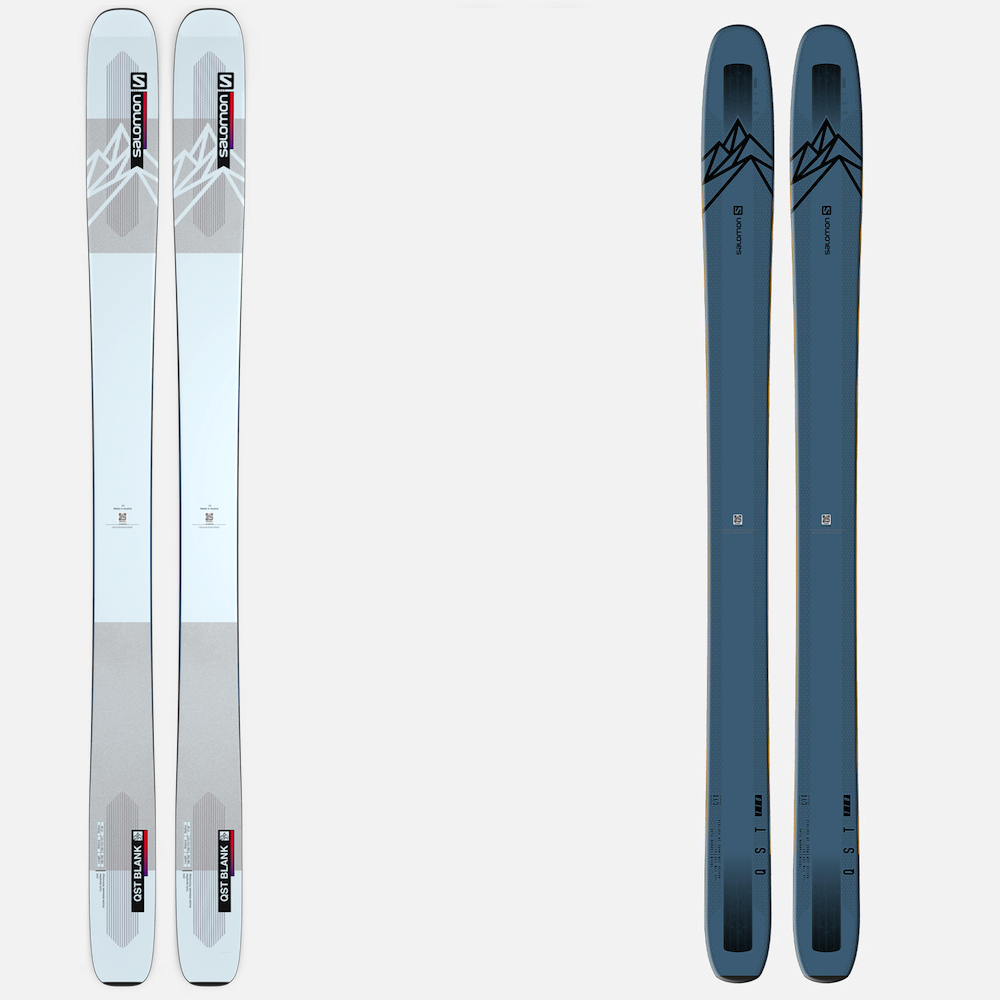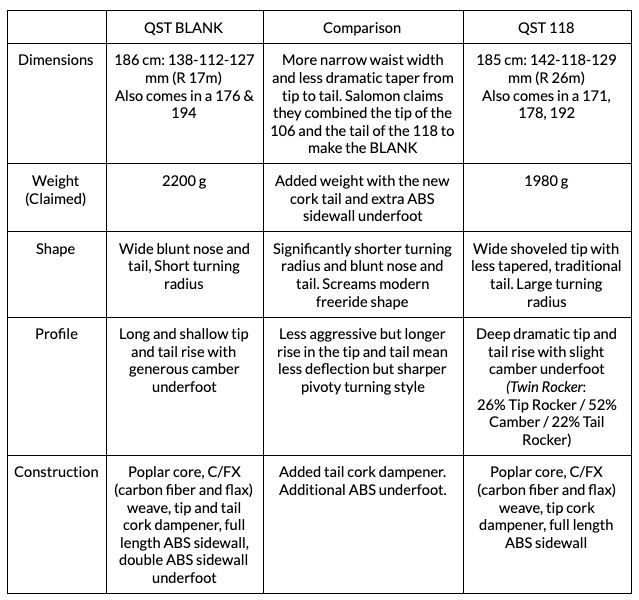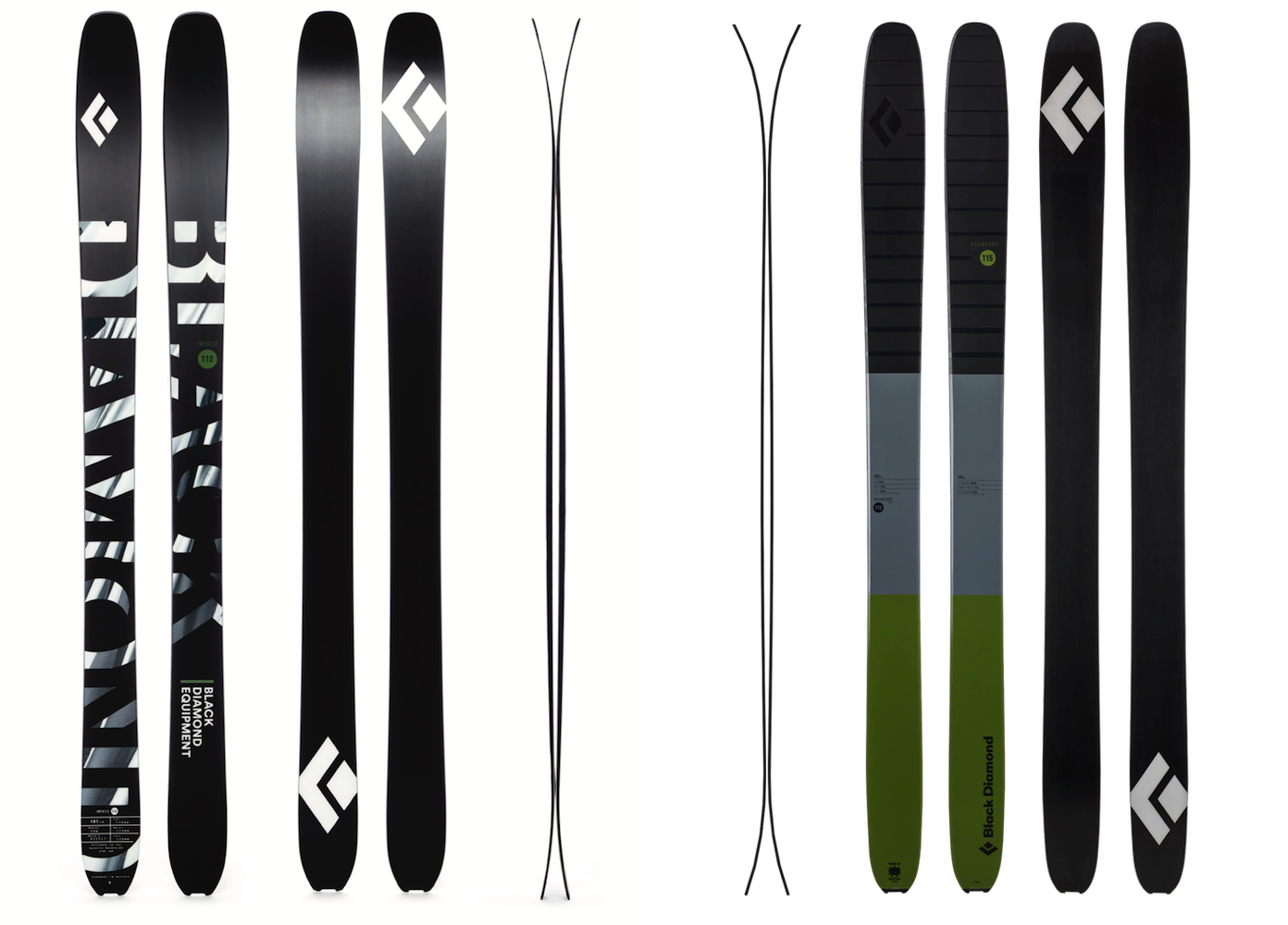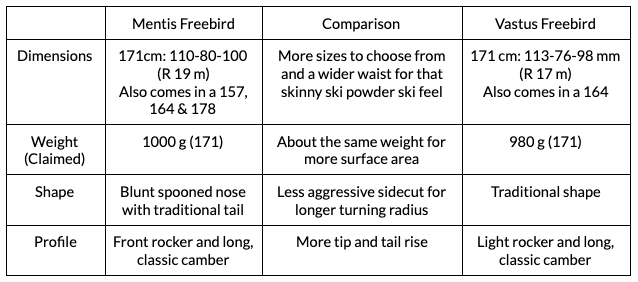Another lap around the sun and another Outdoor Retailer. 2020 was a dynamic year (is that an understatement?*). 2021 is a fresh start and what better/base of a way to move forward than by checking what’s new in the world of ski touring?
Due to limitations around large-scale gatherings (like a packed Denver conference center), OR 2021 went virtual. We’re not quite sure what that means either, but we respect the energy that Outdoor Retailer Winter Online put into the online event. Our correspondence with outdoor brands is on-going, and largely consists of emails and zoom calls.
A product of these E-interactions is that we don’t get to compulsively fondle gear. There will be no arbitrary ski flexing, no rubbing new-age fabrics between our fingers or on our faces, and no tinkering with tools we don’t even have names for. That’s okay. We can still speculate about new gear and tag our first impression on What Hot and What’s Not. So here we go.
General Ski Theme for 2021/22
2021 is the Year of Freeride. Is this a sweeping generalization? Yes. There is innovation in other areas of the ski touring industry, but the overwhelming focus that I’m picking up on is that Freeride is IN. A lot of brands are upgrading current series to tailor more towards the Freeride skier. Maybe I can give a definition of what Freeride is to us here at Wildsnow:
Freeride
Adj.
A form of backcountry skiing whose primary focus is the aesthetic of the descent:
Kate defines herself as a Freeride skier because she’ll do whatever it takes to draw her unique line down the mountain.
Skiing that blends the accessibility of both on and off piste terrain
Jeez Louise, Denise seems to be Freeride skiing much more this season. She’s in the backcountry as much as she’s riding lifts.
With that definition in mind, let’s look at some of the skis coming out Fall 2021:
Salomon QST BLANK & QST 98
Salomon updated their QST line up for Fall 2021. The QST 92 and QST 106 stay from last year, and the QST 98 and BLANK (112) are added to the team. The QST series can be differentiated as such:
The nimble 92
The piste-friendly 98
The all-around 106
The freeride BLANK (112)
Since the BLANK replaced the powder-centric 118, we thought it would be helpful to compare them side-by-side here. The QST 118 was a dedicated powder ski. Comparatively, the QST BLANK is a more freeride ride that can handle soft snow, but is stable enough and skinny enough to maneuver as a resort ripper as well. The BLANK takes a step forward with modeling progressive freeride ski design. It’s blunt nose and tail shape, shallow rocker and underfoot camber profile, and ski dampening knick-knacks inside all speak to the advanced design of the QST BLANK. This ski looks like it will slash, slarve, pop and drop – just like all those pro skiers do in the movies.
For me, the BLANK is a testament to the general rising of the tide with downhill ski ability. People (the general passionate skiing public) are getting better at downhill skiing. A lot of skiers seem to be jumping bigger, skiing fast, and adding more artistic swagger to their descents. How else could Salomon bring to market such a modern ski shape that demands nontraditional skier input? This population of freeriders isn’t the majority [yet], but is a growing segment of ski culture.
The QST Blank takes its name from The Blank Collective, a production group of Salomon athletes in British Columbia who were instrumental in the design of the ski. This includes athletes: Chris Rubens, Alexi Godbout, Stan Rey, and Cody Townsend.
Also new to the QST line is the more user friendly QST 98. It looks like a great ski that doesn’t have to be skied as hard as the BLANK.
QST 98
Lengths: 169/176/183/189
Sidecut: 132/98/120 (176 cm)
Radius: 16m (176 cm)
Weight per ski: 1860g (176 cm)
Black Diamond Impulse Series
Black Diamond introduces the Impulse line of freeride skis to replace the long-standing Boundary series. The line includes a 98, 104 and 112 waist width. The Cirque and Helio Carbon were introduced in Fall 2020, adding to the general theme of touring innovation for the 2020 year at BD. This year, Black Diamond [along with other brands] focuses on freeride. BD even said it themselves: ”We’re pointing right at the sidecountry freeride market.’ The Impulse series is designed to weave in and out of the ski area boundary. A flip flopper between resort chop and backcountry pow. So if the Impulse is to replace the Boundary, how do they compare?
The Impulse line has all the characteristics of a modern freeride ski: shallow tip and tail rise, small[er] turning radius, and a heavy construction. We look forward to giving these rigs a rip to see how they compare to other new-to-this-season freeride skis. Looking at the dimensions and weight of the Impulse Line, I would relate them to the Black Crow big mountain collection (Camox, Corvus, Anima), the Salomon QST lineup (98, 106, Blank 112), or the Faction Prodigy series (2.0, 3.0, 4.0).
Scott Pure Ski
The Scott Pure is a big mountain purebred ski designed in collaboration with freeride phenom Jeremie Heitz. The Pure Ski features a similar construction to the existing Scott Superguide series: paulownia core with beech stringers and a carbon/aramid lattice wrapped over the top. The Pure however has an added layer of titanal for further dampening and edge hold at higher speeds. Scott is another great example of the moving focus towards freeride skiing right now. Last year, they introduced the Superguide Freetour (at 105 mm underfoot) as the biggest touring ski in their lineup. 2021 is bigger and burlier with the Pure Ski being 109 mm underfoot and weighing in at 2000 grams. That’s a lot of weight for the uphill, but it’s what one needs for big freeride style skiing.
Compared to other freeride skis that we’re mentioning (QST BLANK or BD Impulse), the Scott Pure has a more directional shape. There is tip and tail rise to the ski, but much more traditional camber underfoot and a long turning radius. This will make the ski hold an edge through variable snow and facilitate big sweeping La Liste style turns. So for those who arch traditional GS-style turns and cringe at the word slarve, the Pure looks to be more more up your alley.
Black Crows Mentis Freebird
Not all the skis this year are freeride driven. Black Crows is coming out with an upgrade for their training/uphilling ski, the Vastus Freebird. They replaced their directional 76 mm underfoot orange highlighter with a more playful,wider teal highlighter and called it the Mentis Freebird. The Mentis Freebird is built with a lightweight paulownia core, a layer of carbon/fiberglass weave, and a titanal mounting plate underfoot. The skis come in at a scant 1000g/ski for the 171 cm length. Cheers Black Crows for making a lightweight rig that looks playful and fun. Since they added 4 mm to the waist, do we consider this a freeride training ski??
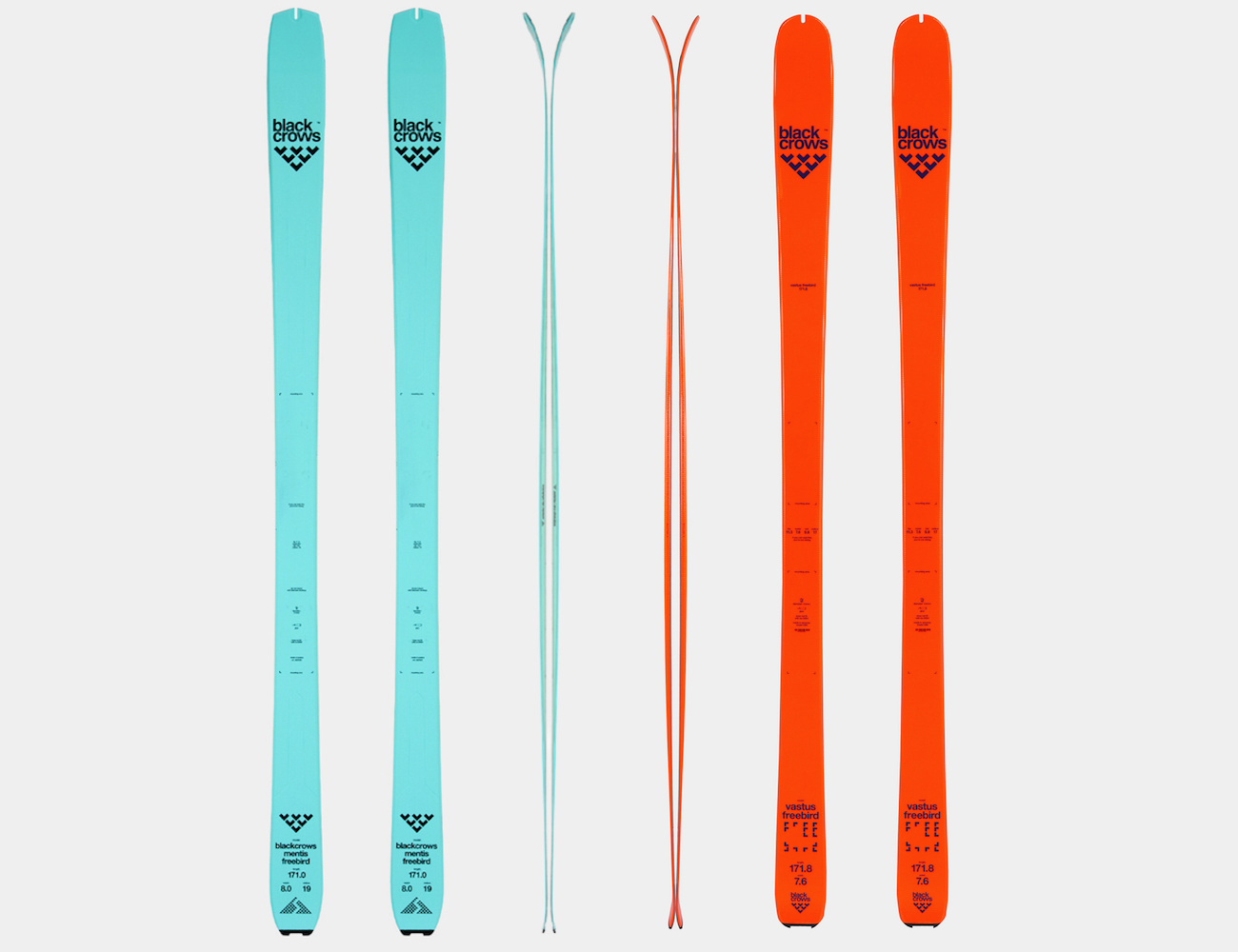
The new Mentis on the left, the retired Vastus on the right. Notice the difference in profile and shape: more tip and tail release, less camber and less of a spooned nose for the new Mentis.
Dynafit Blacklight 95
Dynafit comes out with a wider edition to their Blacklight series with the Blacklight 95. This addition feels like a skinny ski made wider than than a wider ski made skinny. For example: the Atomic Backland 95 and the Black Crows Camox Freebird feel like skiny versions of the Backland 107 and Navis Freebird (respectively). The Blacklight 95 is a wider version of the Blacklight 88. The implications for this is that the Blacklight 95 is not a skinny powder ski, but a fat technical ski. This makes it more suitable as a hard snow versus snow snow connoisseur.
The Blacklight has a paulownia core with a layer of carbon fiber on top. The ski has a slight tip and tail rise with the classic Dynafit trapezoidal spooned tip. The 95 feels more like a North American size within the Blacklight family and we feel special that the German brand has us transatlantic compatriots in mind.
General Impressions for the New Skis for 2021
Big freeride theme for 2021. There is some utility around a freeride ski, being that it’s The Jack of All Trades: it can spin laps on the resort where a sturdy, stable ski is needed. But then you can dip beyond the boundary of the resort to take that hard-charging, resort-skiing style into the backcountry. It can do it all.
But from a backcountry exclusive perspective, freeride skiing is poetic. It demonstrates a level of off-piste artistry. Sacrifices are made to get to the top of a ski line. It’s hard touring uphill in a four buckle boot, hybrid touring bindings and a 2000+ gram ski. A lightweight, touring specific kit would make a day of backcountry skiing much easier. But that added effort in carrying around freeride gear is dedicated towards the craft of drawing one’s own unique line down the mountain. You can’t make big broad brushstrokes down a mountainside at mach speeds with a 90 mm touring ski and two buckle boot. There is something notable to consider with the sacrifice in pursuit of aesthetic that characterizes the world of Freeride. Freeride skiing is pushing the boundary of what’s possible in the backcountry, and we at Wildsnow salute you for it. For an example of this Freeride artistry in work, check out Chamoix-based (of course) Pierre Hourticq.
Stay tuned for our 2021 Outdoor Retailer update on bindings, boots, and other interesting things that we found during our online gear previews.
*yes
Slator Aplin lives in the San Juans. He enjoys time spent in the mountains, pastries paired with coffee, and adventures-gone-wrong. You can often find him outside Telluride’s local bakery — Baked in Telluride.

